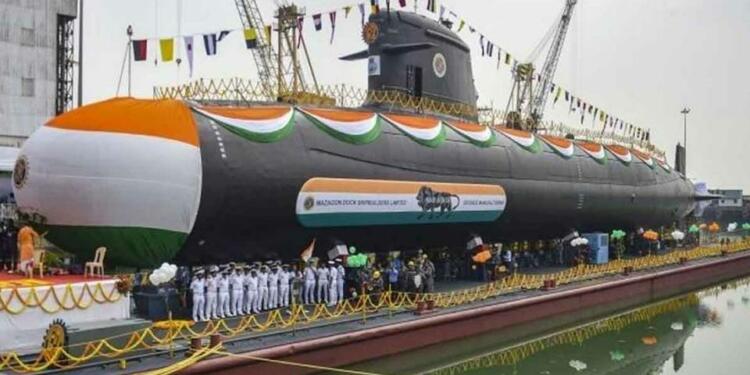For the indigenous construction of six modern conventional submarines under Project 75(I), India issued a Request of Proposal (RFP) in July 2021. Under the Strategic Partnership Model, India has identified Mazagoan Docks Limited (MDL) and Larsen & Toubro (L&T) to tie up with foreign defence majors to build six Air Independent Propulsions (AIP) Diesel Attack Submarines for the Indian Navy. Considering the criticality of AIP technology, companies are reluctant to share the niche technology with India.
South Korea and Spain ready to share AIP technology with India
According to a recently published report in The Hindustan Times, two of the five foreign defence majors, South Korean Daewoo Shipbuilding and Marine Engineering and Spanish Company Navantia have shown interest in building the AIP Diesel Attack Submarines under the Strategic Partnership Model.
It is pertinent to note that five OEMs (Original Equipment Manufacturer) – Naval Group-France, TKMS-Germany, JSC ROE-Russia, Daewoo Shipbuilding and Marine Engineering Co Ltd-South Korea, and Navantia-Spain were chosen to tie up with the MDL and L&T to jointly produce the Submarines.
The aim was to enable foreign partners to set up dedicated manufacturing lines for these submarines in India by providing TOT (Transfer of Technology) for submarine design and other technologies and making India the global hub for submarine design and production
But, out of the five, the Naval Group of France had recently decided to pull out of the project. The Russian Rosoboronexport and TKMS of Germany have not shown any interest in the joint production. It is said that some of the OEMs (Original Equipment Manufacturers) are not comfortable about sharing their expertise and niche sea-proven fuel cell AIP technology with their Indian partners.
Read More: The real reason why French company Naval Group backed out of India’s Submarine project
No one wants to share the niche AIP technology
AIP is a marine propulsion technology that allows a non-nuclear submarine to operate without access to atmospheric oxygen. The conventional diesel-electric propulsion system uses atmospheric oxygen for fuel combustion which requires them to surface almost daily to get the air. The frequent coming out of water decreases the lethality and stealth capabilities of submarines.
But the fuel-based AIP system, an electric fuel cell releases energy by combining hydrogen & oxygen, with only water as the waste ensuring less marine pollution. Further, the chemical reaction of producing energy through fuel cells helps in avoiding mechanical movement which ultimately increases the stealth capabilities further reducing the noise of submarines.
The developing technologies are still in the niche phase and it seems the company does want to transfer the technology of AIP. DRDO (Defence Research and Development Organization) is also expecting a good break- through in the development of technology and has already developed the AIP system by proving the land-based prototype. But the sea-proven fuel cell AIP technology is still in the trial phase and will take substantive time to onboard the submarines.
Read More: Project 75 and 75I: India was, is and will be the ultimate authority in Indian Ocean
South Korean Daewoo commissioned its first AIP-equipped submarines in 2019 and Spanish Company Navantia has also launched the AIP-enabled Isaac Peral Class submarines. If both the countries agree to share the fuel-based AIP technology then it will provide great help to nations in submarine manufacturing. As France and Russia, the top defence allies of India, are still reluctant to share the technology, the partnership of the two with India will provide huge relief to India.
Support TFI:
Support us to strengthen the ‘Right’ ideology of cultural nationalism by purchasing the best quality garments from TFI-STORE.COM































